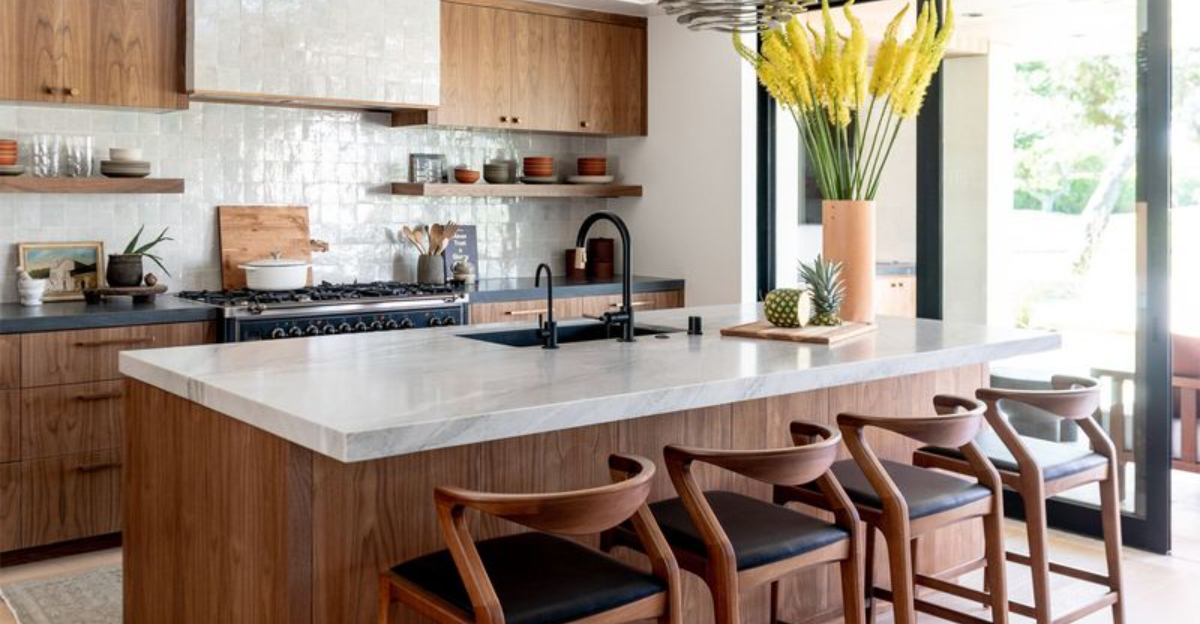Your kitchen should harmonize with your home’s architectural personality, not fight against it. Professional designers know that certain kitchen styles naturally complement specific home types, creating spaces that feel intentional rather than forced.
Whether you’ve purchased a charming craftsman bungalow or a sleek modern condo, finding the right kitchen match will elevate your entire living experience.
1. Victorian Home + Moody Heritage Kitchen
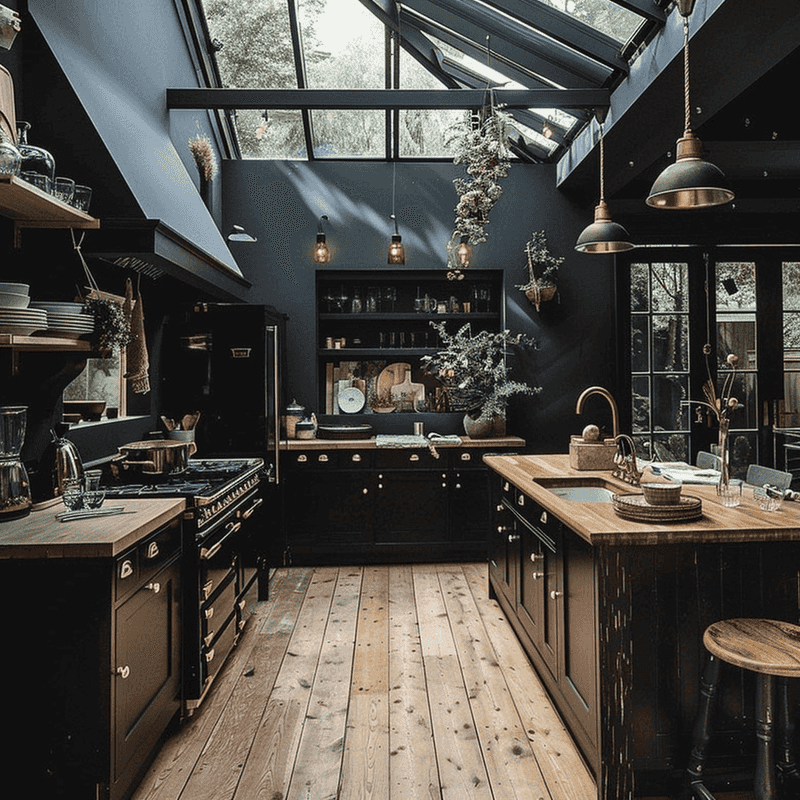
Dark wood cabinetry paired with aged brass hardware celebrates Victorian-era craftsmanship without feeling stuffy.
Keep ceiling height in mind—taller Victorian rooms can handle ornate pendant lighting and glass-front upper cabinets that showcase heirloom dishware.
Integrate modern appliances behind custom panels to maintain period authenticity while enjoying contemporary convenience.
2. Craftsman Bungalow + Quarter-Sawn Oak Simplicity
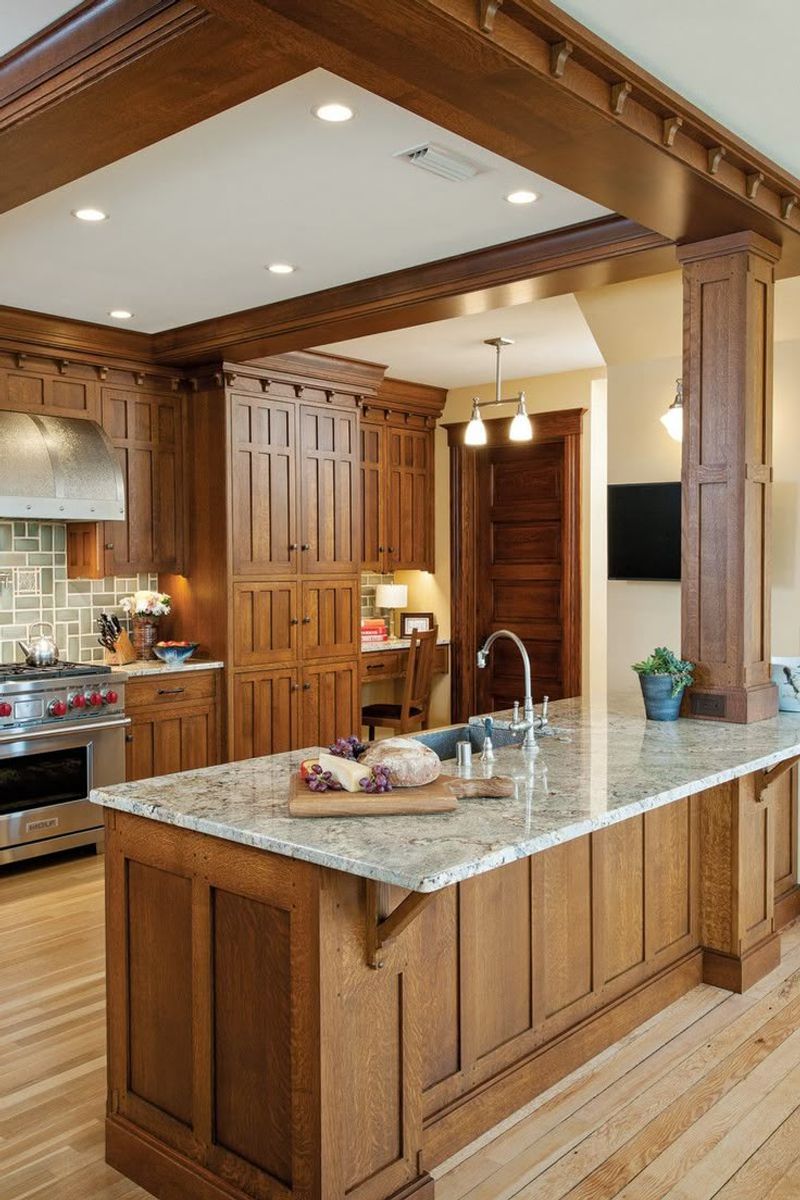
Quarter-sawn oak cabinetry with exposed joinery honors craftsman principles of showing how things are made.
Incorporate handmade ceramic tile backsplashes in earthy greens or blues to echo original fireplace surrounds found throughout authentic bungalows.
Maintain lower horizontal lines with under-cabinet lighting rather than pendants to respect the intimate ceiling heights characteristic of these homes.
3. Mid-Century Ranch + Walnut Minimalism
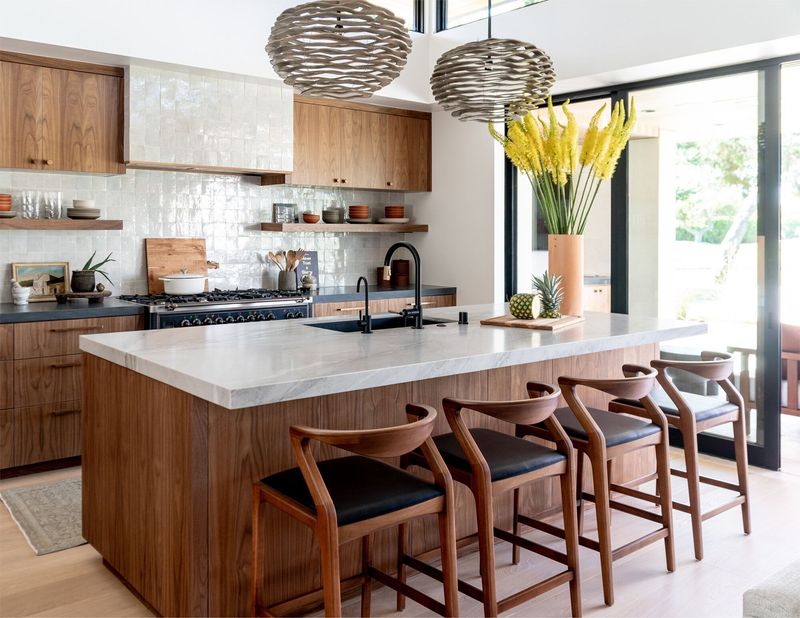
Flat-panel walnut cabinetry with minimal hardware creates clean lines that complement mid-century architecture’s emphasis on functional simplicity.
A waterfall quartz island introduces the geometric planes mid-century designers celebrated, while maintaining visual flow.
Consider terrazzo countertops or flooring—a material enjoying renewed appreciation that authentically connects to the home’s original era.
4. Colonial Revival + Classic White Inset Cabinetry
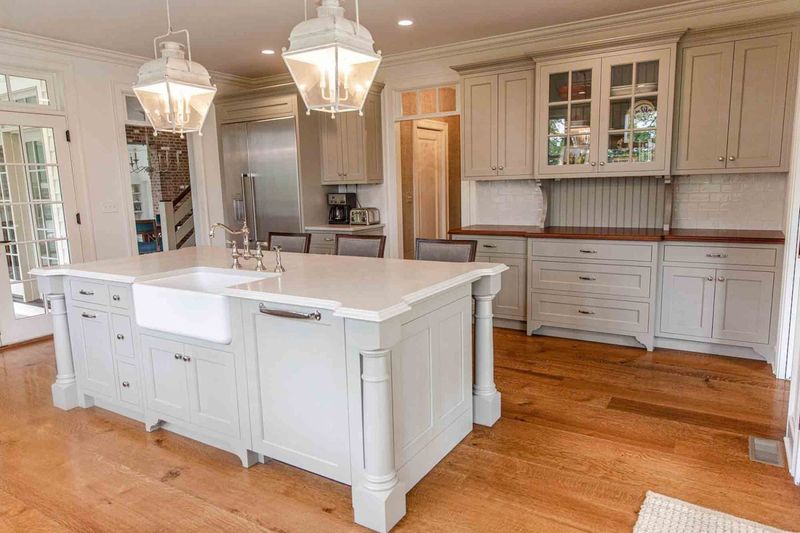
Inset cabinet doors with visible hinges reference traditional joinery techniques that colonial craftsmen would recognize.
A farmhouse sink and bridge faucet in polished nickel strike the right historical note without feeling like a museum exhibit.
Crown molding that matches existing architectural details throughout the home creates a seamless transition between kitchen and adjacent formal spaces.
5. Spanish Revival + Terracotta & Painted Tile
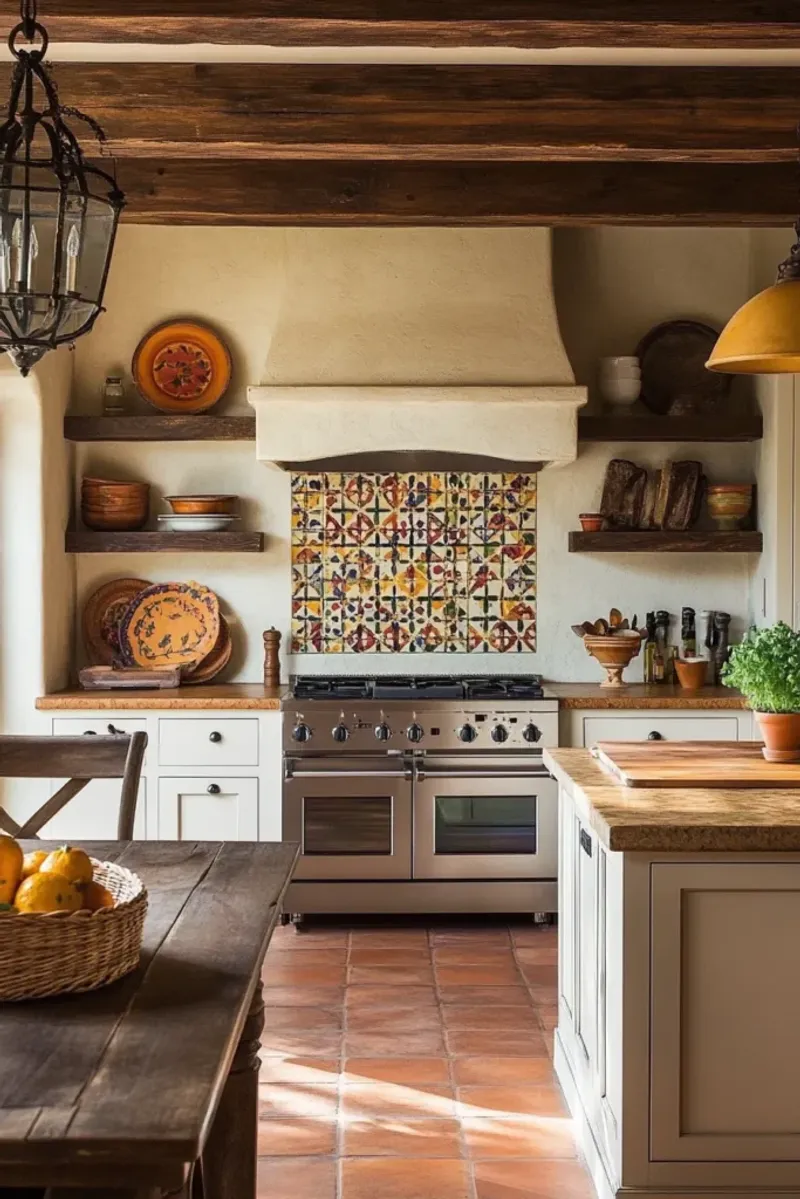
Hand-painted tile backsplashes in blues and yellows provide authentic Mediterranean character against warm white plaster walls.
Exposed wooden ceiling beams—even if newly installed—create architectural consistency with other Spanish revival features.
Terracotta floor tiles offer cooling properties originally valued in Mediterranean climates while providing visual warmth against wrought iron accents.
6. Tudor Home + Rich Wood & Leaded Glass
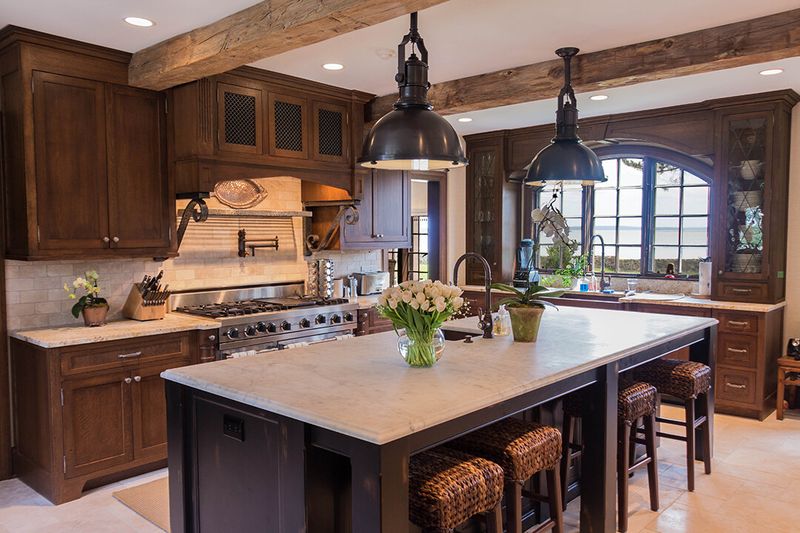
Stained oak cabinetry with decorative mullions echoes Tudor’s distinctive timber frame aesthetic without overwhelming modern sensibilities.
Leaded glass cabinet inserts nod to traditional Tudor window designs while displaying special dishware collections.
Arched doorways between kitchen and dining spaces maintain architectural consistency with Tudor’s romantic medieval references.
7. Contemporary Glass House + Floating White Minimalism
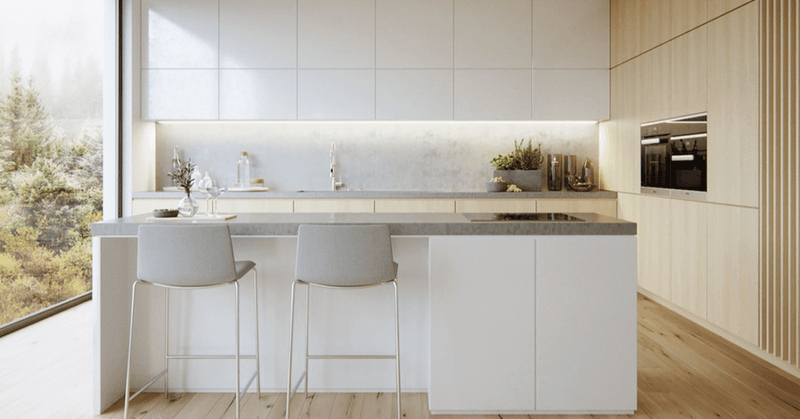
Handleless white cabinetry seemingly floats against floor-to-ceiling windows, emphasizing views rather than competing with them.
Minimal upper storage maintains open sightlines—crucial in homes where glass walls are the main architectural feature.
Matt surfaces reduce glare from abundant natural light while maintaining the clean, uncluttered aesthetic contemporary glass architecture demands.
8. Industrial Loft + Raw Steel & Reclaimed Wood
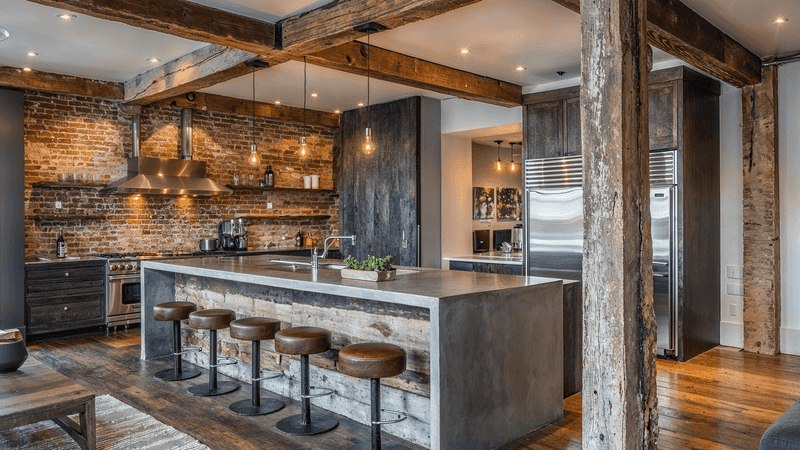
Exposed ductwork and original brick walls become design features rather than elements to conceal—authenticity rules industrial spaces.
Stainless steel commercial-grade appliances reflect manufacturing heritage while satisfying serious cooks’ performance demands.
Reclaimed wood open shelving adds necessary warmth while maintaining historical integrity in spaces originally built for utility rather than comfort.
9. Coastal Cottage + Beadboard & Sea Glass
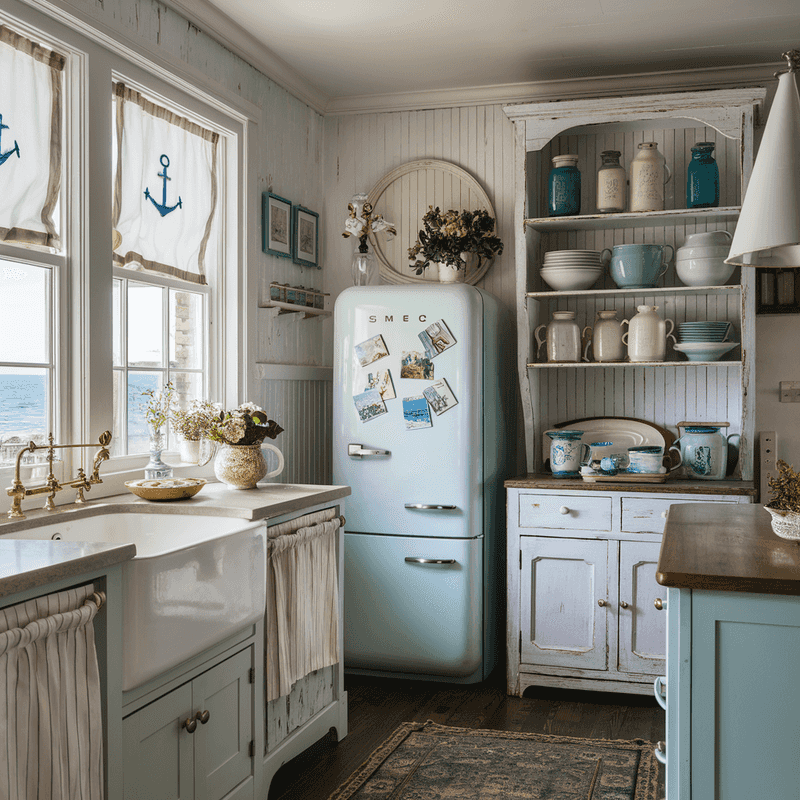
Vertical beadboard cabinet panels reference traditional coastal construction techniques used for centuries along shorelines.
Sea glass-colored tile backsplashes introduce ocean hues without resorting to literal seashell motifs or anchors.
Open shelving displaying white everyday dishes creates breathing room in typically smaller cottage kitchens while maintaining a light, airy aesthetic.
10. Log Cabin + Rustic Stone & Timber
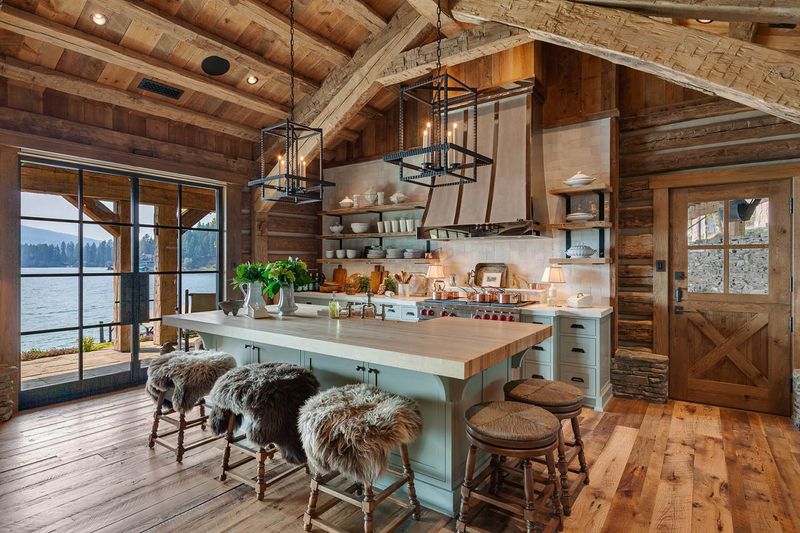
Rough-hewn timber cabinets continue the structural language of log walls into the kitchen space for architectural consistency.
Natural stone countertops with visible geological character complement organic wood textures rather than competing with them.
Wrought iron hardware and lighting fixtures echo blacksmithing traditions that would have been contemporary with original cabin construction.
11. 1970s Split-Level + Warm Woodgrain Laminate
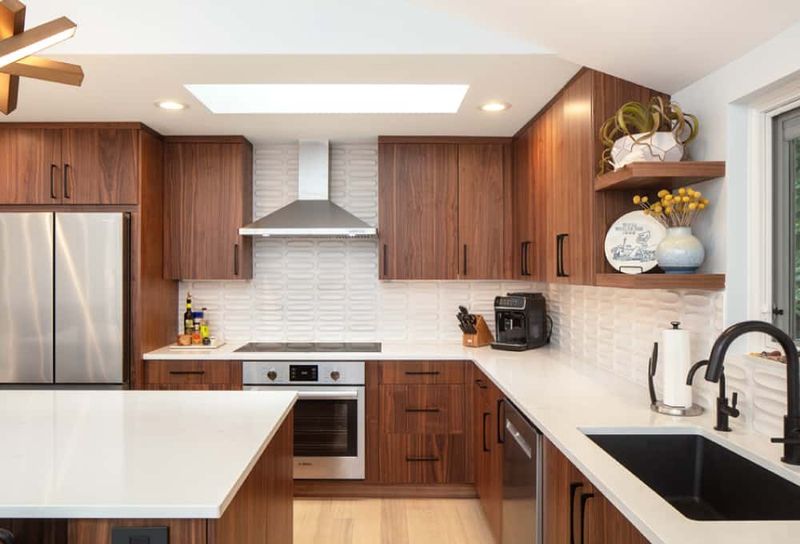
Flat-panel walnut laminate cabinetry celebrates rather than apologizes for the 1970s era—authenticity trumps trends.
Quartz countertops in warm neutrals update the space while harmonizing with original architectural features like sunken living rooms.
Pendant lighting with smoked glass introduces contemporary function while referencing popular materials from the home’s original decade.
12. Prairie Style + Horizontal Line Emphasis
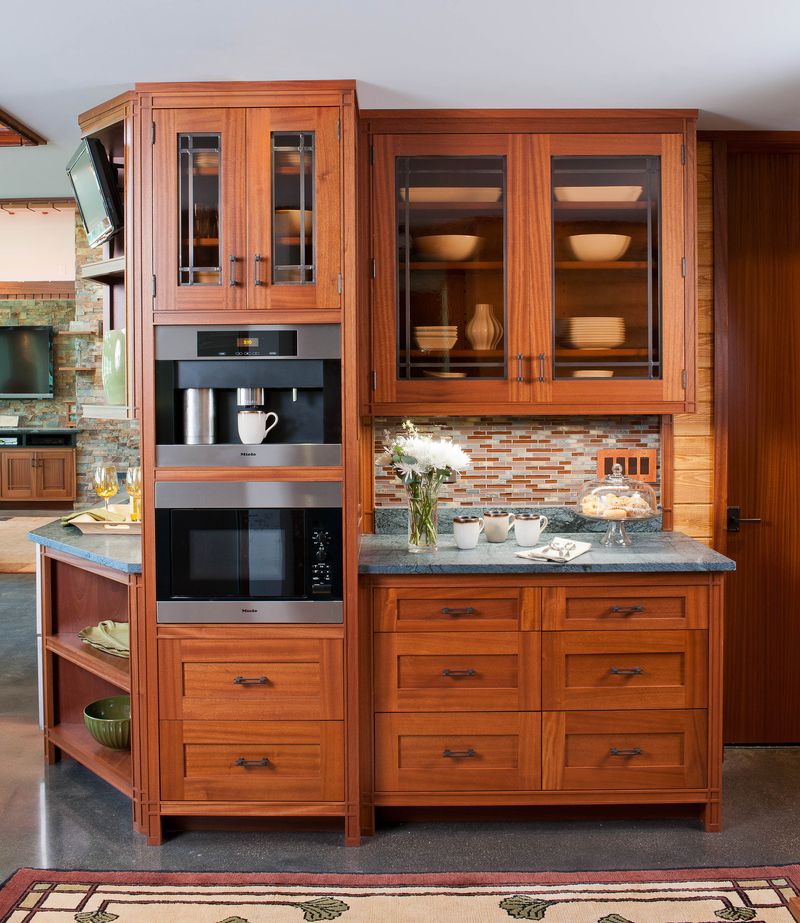
Long, low banks of cabinets with horizontal grain patterns echo Frank Lloyd Wright’s emphasis on connecting interior spaces with the horizontal prairie landscape.
Band windows above countertops bring natural light while maintaining privacy and wall storage capacity.
Stained glass cabinet inserts featuring geometric patterns in amber and green connect kitchen design with decorative elements found throughout authentic prairie homes.
13. Greek Revival + Classic Marble & Columns
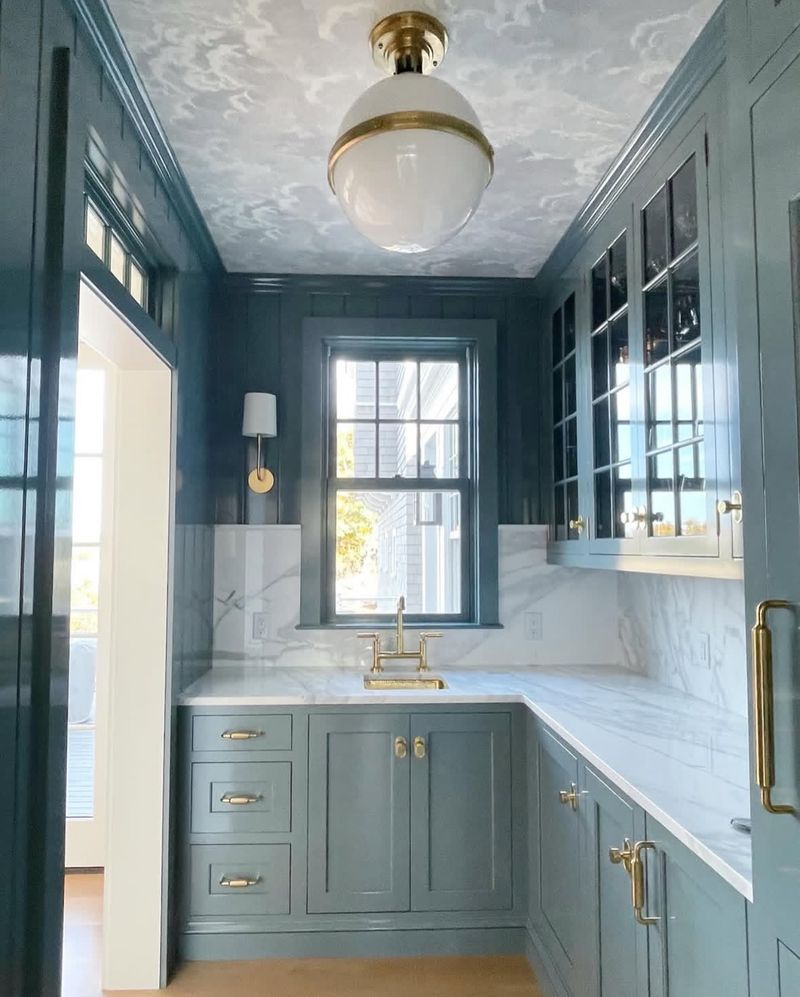
Carrara marble countertops reference classical Greek architecture without requiring a massive renovation budget.
Decorative column details on islands or peninsula supports introduce appropriate architectural language in functional locations.
Symmetrical layouts with centered range hoods reflect Greek Revival’s emphasis on formal balance—an approach that works particularly well in larger kitchens.
14. Art Deco Apartment + Glamorous Metallics
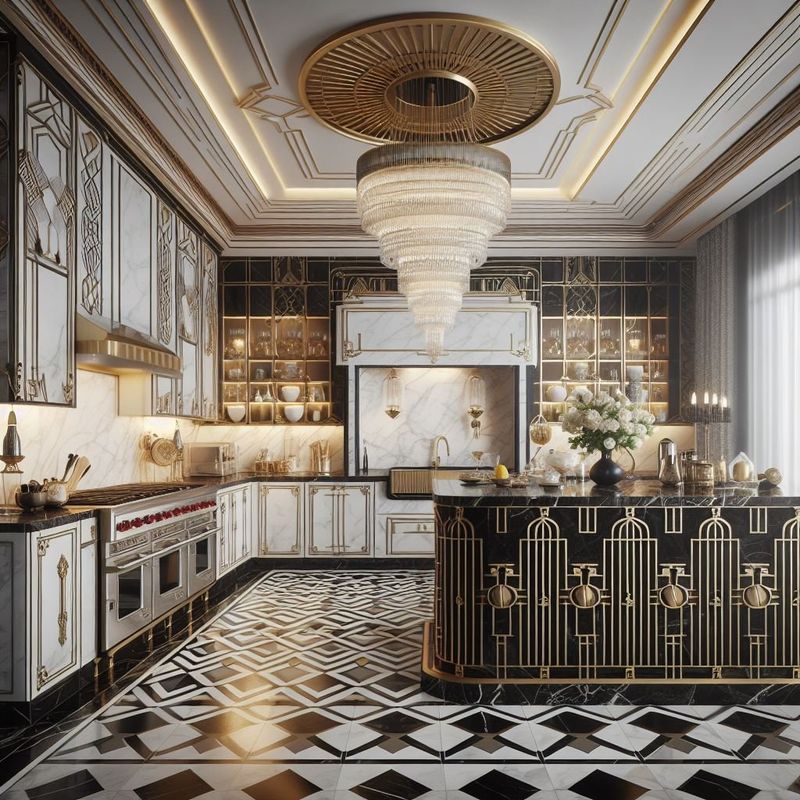
Geometric cabinet patterns featuring brass inlays celebrate Art Deco’s fascination with visual rhythm and precious materials.
Waterfall edges on countertops create the streamlined curves characteristic of 1920s and 30s design movements.
Backlit frosted glass upper cabinets introduce theatrical lighting effects—perfectly aligned with Art Deco’s origins in theatrical and cinematic design.
15. Brownstone + Modern Classic Hybrid
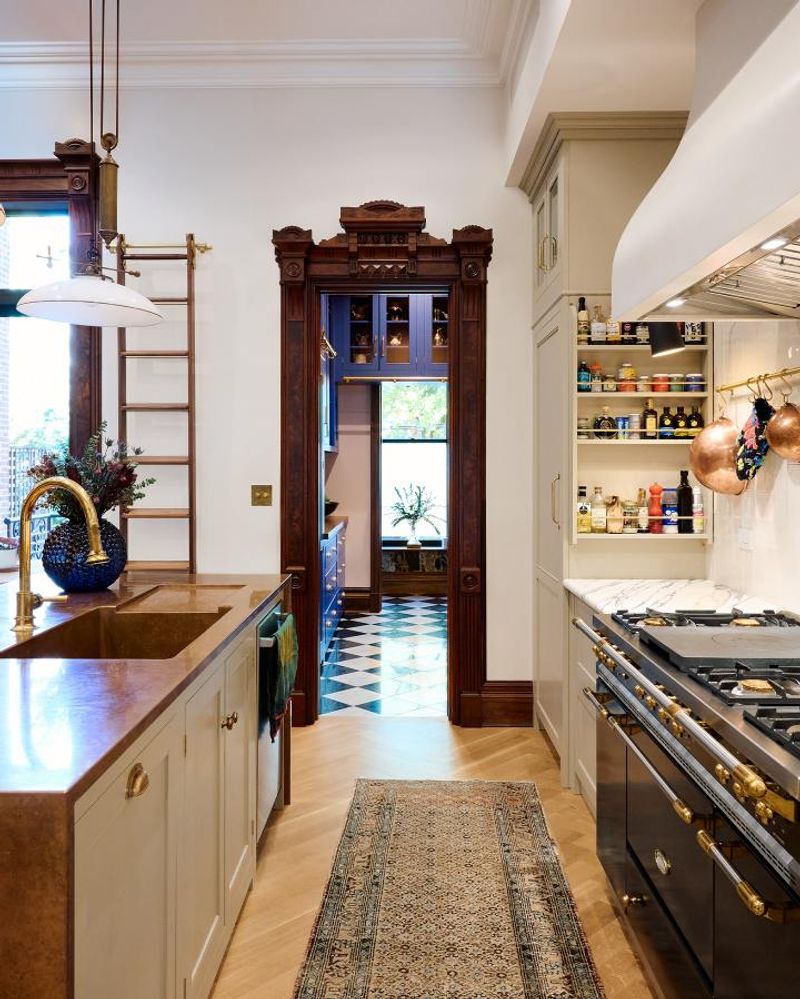
Marble subway tile backsplashes reference historical materials found in original brownstone bathrooms and entryways.
Refurbished original butler’s pantry cabinetry preserves architectural history while adding valuable storage space.
Mixed metal finishes—unlacquered brass and matte black—bridge different historical periods often represented in long-inhabited brownstones.
16. Mountain Modern + Reclaimed Timber & Steel
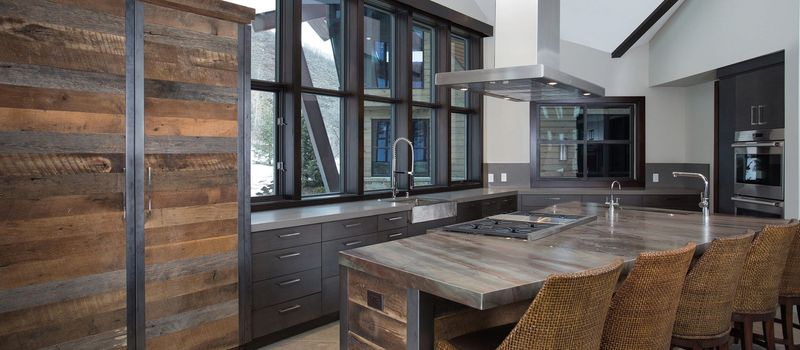
Reclaimed timber shelving and hood surrounds introduce authentic mountain materials without overwhelming contemporary sensibilities.
Blackened steel cabinet frames with inset wood panels strike an ideal balance between rustic and refined elements.
Large-format concrete-look porcelain floor tiles provide practical durability for mountain activities while maintaining clean architectural lines.
17. New England Saltbox + Shaker Simplicity
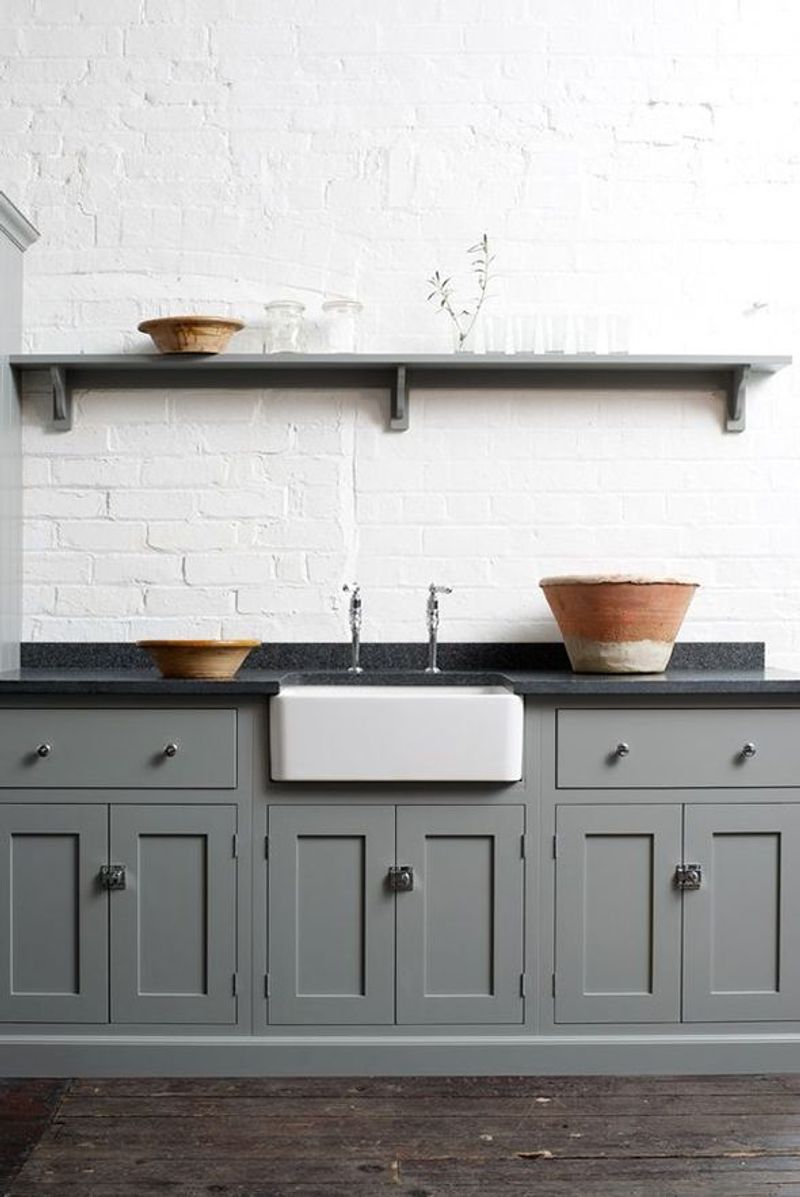
Shaker cabinet doors with visible wooden pegs reference authentic joinery techniques used by early New England craftsmen.
Soapstone countertops and farmhouse sinks provide historical accuracy while offering practical benefits—they age beautifully with use.
Buttermilk or oxblood painted lower cabinets with natural wood uppers create visual interest while maintaining period-appropriate restraint.

